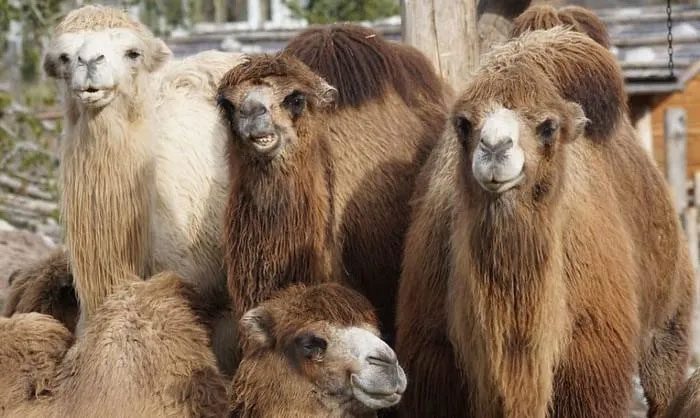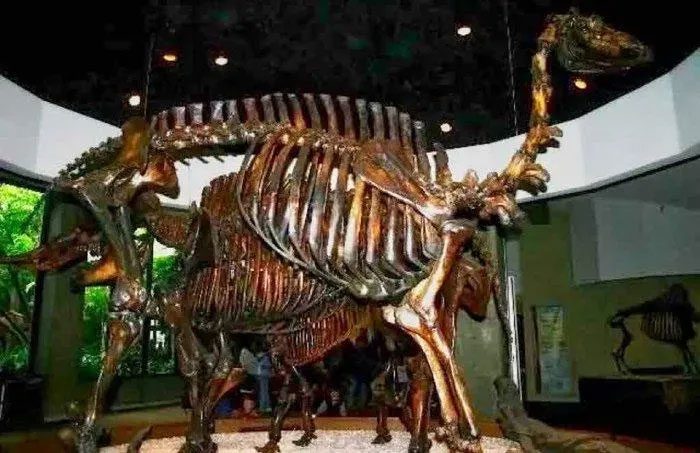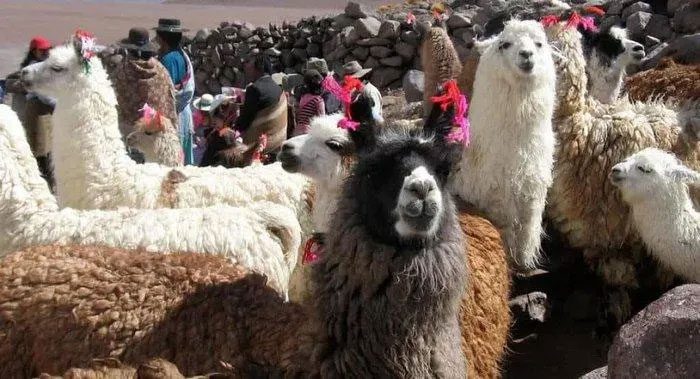Camels are known for their unpredictable temperament. They may even “spit” at you if they feel threatened. However, these animals are also hardworking, graceful, and quite humorous. While camels have fossil connections to the Middle East and Africa, they actually originated in North America around 45 to 50 million years ago.
The earliest known North American camel is Protylopus, which was the size of a rabbit. This prehistoric camel evolved into larger North American camels before migrating to Asia and beyond. Essentially, one could say that camels originated from North America. But how did camels from America migrate to Asia, and why can we no longer find wild camels in North America today?

Essentially, one could say that camels originated from North America.
Camels roamed from Alaska to Mexico between 3.6 million and 11,700 years ago. American paleontologist Joseph Leidy (1823-1891) first described this species in 1854.
The ancient American camel, Camelops, means “camel face” and resembled a large camel. It stood about 7 feet tall at the shoulder and weighed approximately 820 kg. This size is slightly larger than that of modern camels. It had long spines along its back, suggesting it had a hump similar to that of the dromedary.
Initially, many earlier researchers concluded that, based on morphological studies, American camels were closely related to South American camels, like llamas. However, in 2015, a team of researchers from the United States and Canada, led by Peter Heintzman from the University of California Santa Cruz (UCSC), analyzed DNA found in the fossils of ancient camels and compared it with the DNA of living camel species. The researchers found more similarities between prehistoric camels and Old World camels than between North American camels and South American camels.

Camel skeleton.
In 2013, a team of scientists led by Natalia Rybczynski from the Canadian Museum of Nature discovered fossils of large American camels on Ellesmere Island in northern Canada. These camels, which lived 3.5 million years ago, resembled modern camels but were about 30% larger.
Rybczynski noted that many features of modern camels could be beneficial for an Arctic creature. For instance, modern camels have large, flat, wide feet that help them walk on sand. Those same feet could assist a North American camel in traversing snow. A camel’s hump allows it to store fat, so it won’t starve immediately if food is scarce. A hump could help North American camels survive the harsh winter when finding food is challenging. Finally, camels have large eyes that are useful for seeing in dim light – and the Arctic is always dark during winter as the Sun never provides enough light to see the horizon during those months.
The Great American Interchange occurred three million years ago when volcanic activity formed the Panama Isthmus, connecting South and North America. When the two continents were separated for over 200 million years, very different animal species evolved within them. Animals originating from South America include porcupines, armadillos, and some marsupials, including the ancestors of the Virginia opossum. North American camels were among the animals that moved southward. The descendants of American camels became guanacos, vicuñas, dromedary camels, and alpacas.
During the Ice Age, glaciers up to two miles thick covered areas of Asia, North America, and Europe. These glaciers locked up much of the world’s water and caused sea levels to drop by as much as 300 feet. Areas now underwater were once dry land. One such region was Beringia.

Horses and North American camels were among the animals that migrated to Russia.
Today, the Bering Strait separates North America from Russia. The drop in sea levels during the Ice Age exposed land known as Bering Land Bridge or Beringia, connecting the two landmasses. Beringia formed at least twice during the Ice Age, from 75,000 to 45,000 years ago and then from 25,000 to 14,000 years ago. Scientists believe Beringia was at its widest 21,000 years ago.
Most plant species were low-growing shrubs. Many animals, including North American camels, would move along rivers or near grasslands. Beringia was also the only link between North America and Europe. Thus, animals migrating between the two continents had to pass through it. Migrations from Russia to North America included mammoths, reindeer, humans, and their canine, feline, and weasel relatives like wolves, lynxes, and coyotes. Horses and North American camels were among the animals that migrated to Russia. From there, the descendants of American camels continued to Asia and the Middle East, eventually evolving into modern dromedary and Bactrian camels.
Some time after modern humans arrived in North America, camels went extinct for reasons that remain unclear. One hypothesis suggests that human hunting led to their extinction; however, strong counterarguments exist against this view. Ultimately, we still do not know the true cause of this extinction.
One thing we do know is that ancient North American camels began migrating across the world before they died out in North America. They evolved into various species, including Bactrian two-humped camels and dromedary one-humped camels. Today, camels and their relatives inhabit regions worldwide, providing food, transportation, and packing services for humans. The only remaining traces of the American camel now lie buried in the ground, waiting for curious scientists to uncover them.


















































